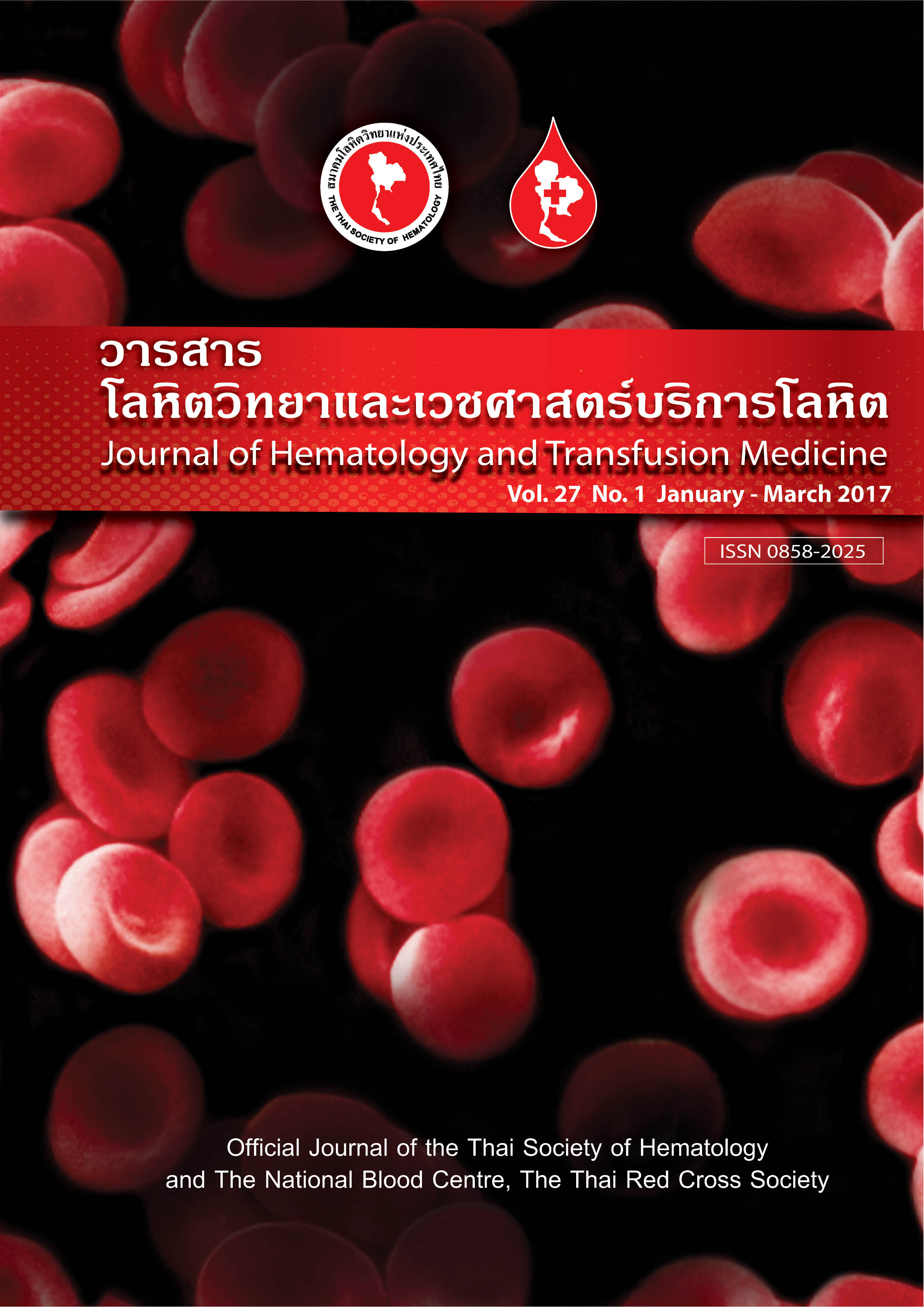High Incidence of Febrile Neutropenia in Non-Hodgkin Lymphoma Patients Receiving CHOP Chemotherapy despite G-CSF Prophylaxis.
Keywords:
R-CHOP, Febrile neutropenia, G-CSF prophylaxisAbstract
Abstract
Introduction: The standard chemotherapy for NonHodgkin lymphoma (NHL) is CHOP-based regimens and the most important complication is febrile neutropenia (FN). Currently the addition of Rituximab to CHOP (R-CHOP) and G-CSFprophylaxis are commonly prescribed. Therefore, we aimed to determine the up-to-date incidence and risk factors of febrile neutropenia among Thai patients. Method: We conducted a retrospective and prospective cohort study. The NHL patients who received CHOP or R-CHOP regimens at King Chulalongkorn Memorial Hospital from 2006-2016 were followed for febrile neutropenia. G-CSF prophylaxis was given according to attending doctor discretions. Results: A total of 195 patients were enrolled. The median age was 61 years old and 52% were female. The incidence of febrile neutropenia was 25% (50/195). FN occurred in 22.5% (27/120) vs. 30% (23/75) of R-CHOP vs. CHOP groups, respectively (P = 0.20).The incidence among patients who received G-CSF prophylaxis was 26.7% (39/146). Without G-CSF prophylaxis, FN was found in 4.2% (1/24) of patients who were all young and had no risk factors. Multivariate analysis showed that age >65 years (Odds ratio [OR] 2.77, 95 Confidence interval [CI] 1.11-6.88, p 0.028) and the presence of comorbid diseases (OR 3.01, 95%CI 1.21-7.45, p 0.017) could predict febrile neutropenia. Conclusion: In spite of G-CSF prophylaxis, the incidence of febrile neutropenia after R-CHOP or CHOP regimens was still high among Thai patients, especially the elderly with comorbid diseases.



